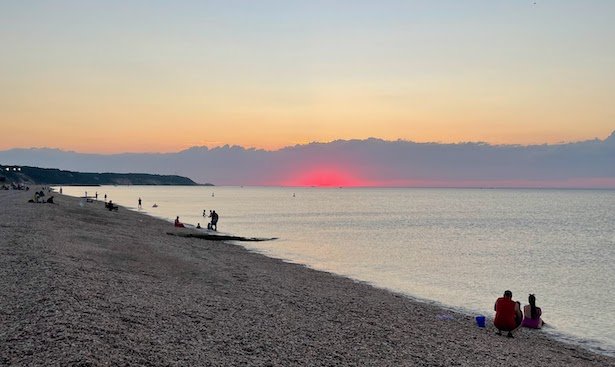A biennial report released by Save the Sound, an organization that leads environmental action in the Long Island Sound region, offered generally positive news for swimmers and beachgoers, noting that 78% of the Long Island Sound beaches monitored earned “A” or “B” grades for water quality.
Nine of the top ten beaches in New York on the Long Island Sound were in Nassau and Suffolk Counties. Four were in Southold, one in Brookhaven, three in Oyster Bay and one in Smithtown.
A far cry from decades past when people were not comfortable swimming in the Sound – the 2023 Long Island Sound Beach Report demonstrates that water quality at most swimming beaches in the Sound is good to excellent in respect to safe swimming, the organization said in a statement.
On the flip side, the report revealed that rain events over the past three years have triggered an increasing number of beach sample failures. The overall failure rate of beachsamples was nearly three times as high in wet weather than in dry weather, an even greater disparity than monitored in the 2021 Beach Report.
Beach closures and failures after rain events (often the day after rainfall ends, sometimes lasting several days) are concerning for several reasons:
- First, elevated levels of fecal contamination after rain can often indicate untreated sewage has made its way into a system of pipes only designed for stormwater
- Second, beaches with abundant wet weather failures have large swaths of impervious surfaces (e.g. roads, roofs, parking lots) that are leading to high volumes of stormwater flow to beaches
- Third, rainfall intensity and frequency are increasing due to climate change, raising the stakes. From 2020 to 2022, the region experienced the most rain during a three-year period that has been recorded in a decade
Save the Sound encouraged investments towards improving local stormwater systems to help preserve water quality.
Save the Sound has created a dedicated website, which features interactive maps listing beach water quality at all 207 monitored beaches, and from which the full Beach Report can be downloaded.
The site also features a “beach access” section including information on which beaches offer public access, fees, the location of kayak and canoe entry ramps, and more useful information. The site highlights two decades of water quality data for Long Island Sound.
Learn more at www.savethesound.org.










